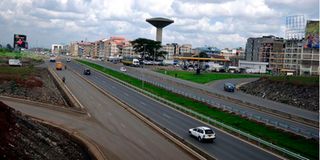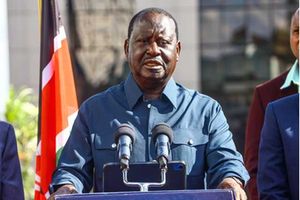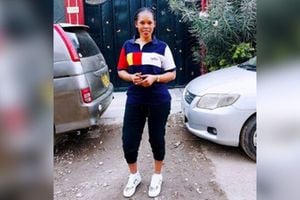Construction of Outer Ring BRT to start next year

A section of Outer Ring Road in Nairobi.
The government will start construction of Line 5 of the Bus Rapid Transport system along Outer Ring Road in Nairobi next year.
This comes after Kenya Urban Roads Authority (Kura) signed a consultancy contract with the Korean Consortium led by Kunhwa Engineering & Consulting Co. Ltd for the establishment of BRT along the 13km BRT line, which runs from where the demolished Taj Mall stood on North Airport Road to GSU headquarters in Ruaraka, Thika Road.
The Korean company won the consultancy contract worth Sh583 million.
According to Kura, the consultant is expected to undertake detailed engineering design, provide assistance during the identification of the works contractor, construction supervision and support during the defects liability period.
The BRT project, which is also called Nyati, traverses Ridgeways (Kiambu Road)-Balozi (Allsops) and Imara Daima and is funded by a loan through the Economic Development Cooperation Fund (EDCF) through the Export-Import Bank of Korea (KEXIM) with construction expected to commence by June 2023.
Kura’s Director General Eng Silas Kinoti while signing the contract assured the consultants of the Authority’s full cooperation and support to enhance quick realisation of the project.
“We will give you all the support you will need. Our citizens are anxious to use the facility and it should happen as soon as possible. You have won a very competitive contract and I have confidence in your vast experience. I assure you of our full support. We want this to be the first and fastest BRT to be fully implemented in Nairobi. BRT Line 5 (Outer Ring Road) is one of the most important lines as all the other lines connect to it. The project will decongest the city, promote road safety and enhance urban mobility and connectivity,” he said.
The consultancy is a joint venture between Kunhwa Engineering, Dohwa Engineering Co., Limited, Yooshin Engineering Corporation and Tracom Co., Limited.
Kunhwa Engineering Co. Ltd was represented by Mr Jeong Youn who doubles as the Project Manager and Mr Min Kyeong Jeong. Also present was Mr Inbeom Seo of Yooshin Engineering Corporation.
Mr Youn assured the DG of efficient implementation of the project saying the team is committed to doing whatever is possible for quick setup.
Kenya secured a 14 billion loan from the African Development Fund (AfDB) in 2015 to build the project in Nairobi’s Eastlands that has transformed the densely populated Eastlands area.
The road’s expansion was among multiple road projects in the city which include the Thika Superhighway, three bypasses, Western Ring Roads and the expansion of five roads in Eastlands funded by the European Union.
Multiple interchanges
During the construction period, service lanes to ease the expected traffic congestion were given priority before the contractor moved in to construct the inner lanes.
The project was undertaken by the Chinese company Sinohydro Corporation and saw the road expanded with multiple interchanges to cure the characteristic traffic congestion experienced currently.
The road passes through densely populated residential and industrial areas in Eastlands which contributed to high fares and cost of goods.
The project involved the construction of two lanes in each direction, service roads, 10-footbridges, non-motorised transport facilities and six interchanges.
The design also made provision for a nine-meter raised central median that was to later be developed into a BRT corridor.
Last month, the State allocated Sh1.17 billion to finance the implementation of the Nairobi BRT project in the financial year starting July.
The national government will provide Sh1.05 billion while the balance will be footed through foreign financing, the National Treasury said in its expenditure plan for the new fiscal year.
For the BRT, Nairobi Metropolitan Area Authority has gazetted 12 mobility corridors, seven of them for core mass rapid transportation linking Limuru, Ngong Town, Kenol, Murang’a, Kiambu, Ruai, Jomo Kenyatta International Airport (JKIA) and Konza techno city.
The remaining five comprise rapid transport corridors along Line 2, which have been contracted and works on them will begin soon.
Line 1 is to run from James Gichuru Road/Waiyaki Way to JKIA — a distance of 20 kilometres, while Line 2, which is 31 kilometres long, will run from Lang’ata Road to Ngong Road as well as Juja Road and Komarock Road to Ruiru. It will have major stops at Dandora, Kariobangi, and near Gikomba Market.
Line 3 will run from Githurai through Thika Road to Moi Avenue in the CBD and terminate at Kenyatta National Hospital. Line 4 will cover 14 kilometres from T-Mall to Jogoo Road.
Priority corridors are the JKIA to Likoni, James Gichuru-Rironi, and Bomas to Ruiru roads.
The 27-kilometre Kasarani-Kenyatta National Hospital line that was expected to be operational by June is part of the second corridor that runs from Kenol to Rongai.





